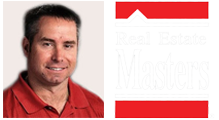 Simply put, a mortgage is a loan that a home buyer obtains directly from a lender to purchase real estate. The mortgage is a lien on the property that secures a promissory note (promise to repay the debt) that states the terms of the loan, including the interest rate, and the number of payments.
Simply put, a mortgage is a loan that a home buyer obtains directly from a lender to purchase real estate. The mortgage is a lien on the property that secures a promissory note (promise to repay the debt) that states the terms of the loan, including the interest rate, and the number of payments.
The most popular mortgages available to home buyers today can be divided into two general categories: those which offer fixed interest rates and monthly payments, and those where one or both of those factors are adjustable.
Fixed rate/fixed payment loans are more traditional, and remain the most popular home financing method, currently accounting for about two-thirds of all residential mortgages. Their advantages are well-known: You always know what your monthly principal and interest payment will be, so your basic housing cost will remain unaffected by interest rate changes until the mortgage is paid off.
Mortgages that entail flexible rates and/or payments have grown in popularity during periods of high interest rates and/or rapidly rising home prices. Many, including the popular ARMs (Adjustable Rate Mortgages), offer lower-than-market initial interest rates that allow buyers a measure of affordability unavailable in fixed-rate loans. The tradeoff may be higher interest rates and higher monthly payments later on.

